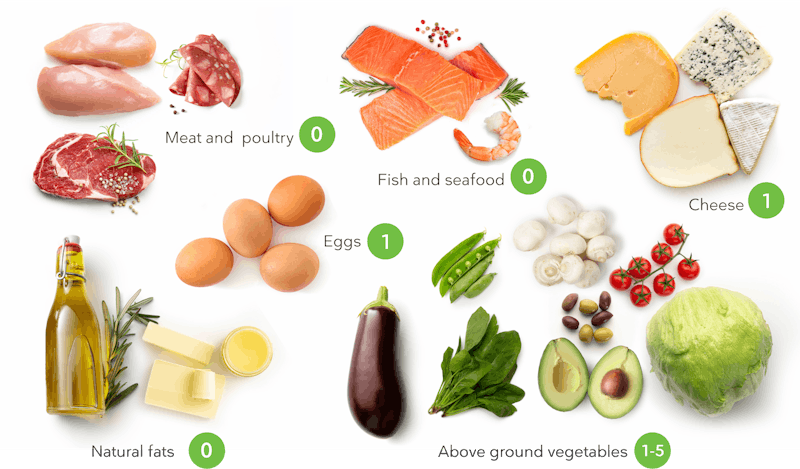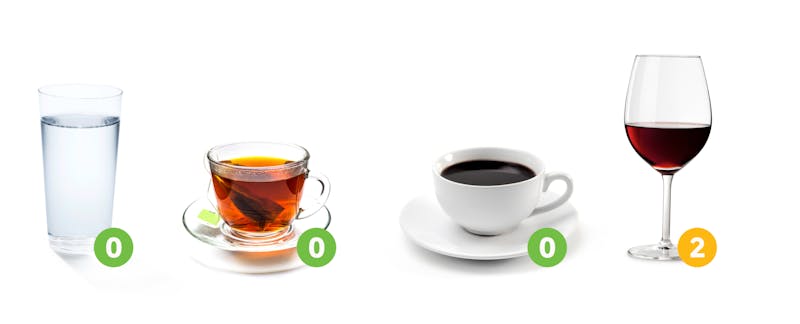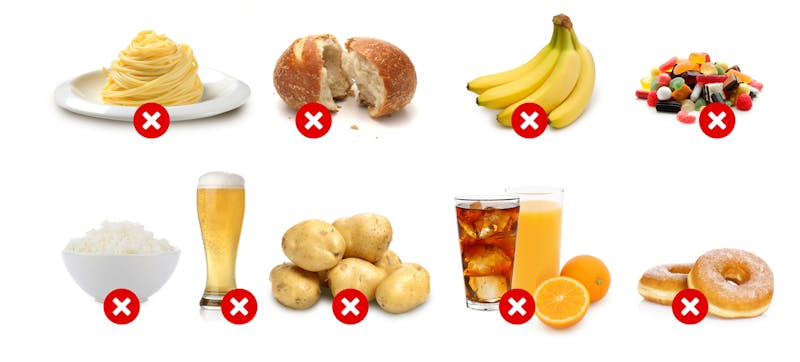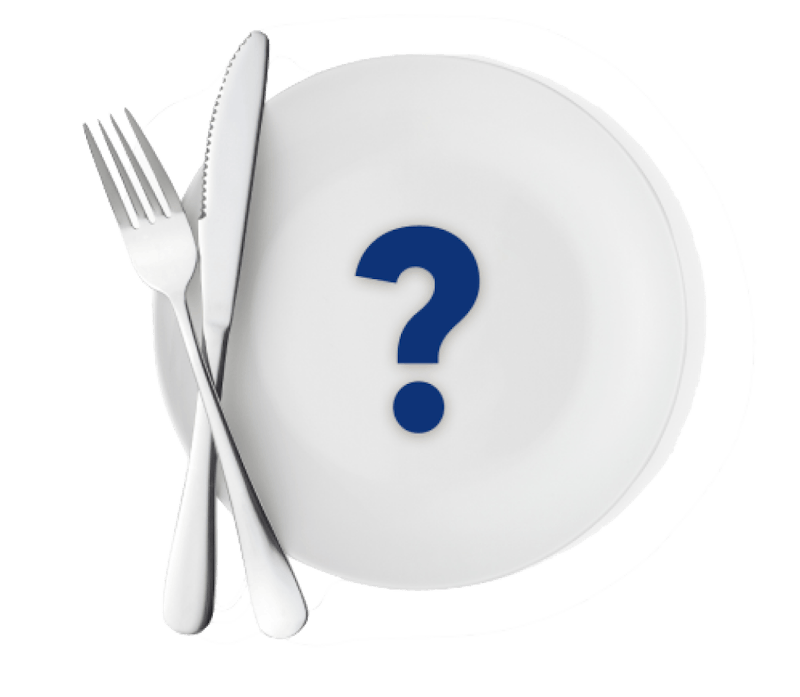KETO DIET FOR BEGGINERS
A keto diet for beginners
A ketogenic diet – or keto diet – is a low-carb, high-fat diet. It can be effective for weight loss and certain health conditions, something that’s been demonstrated in many studies.
A keto diet is especially useful for losing excess body fat without hunger, and for improving type 2 diabetes or metabolic syndrome.
A keto diet is one that limits carbs and has many potential health benefits.When you eat far fewer carbs, your body begins to burn fat for fuel. This can put your body into a metabolic state called ketosis. In this state, your liver turns fat into small energy molecules called ketones, which your brain and other organs can use for energy.
Eating a keto diet lowers insulin levels, often dramatically, which can help you access your body fat stores for energy. Many studies show significant weight loss on keto, withou having to count calories. Keto diets may have other positive health effects, such as reducing blood sugar levels
Summary
The keto diet is a low-carb, high-fat diet. It can help the body burn more fat, reduce hunger, and reduce blood sugar levels.
Precautions before starting a keto diet
There are controversies and myths about a keto diet, but for most people, it appears to be very safe. However, two groups often require medical supervision:
- Do you take medication for high blood pressure?
- Do you take medication for diabetes, such as insulin?
Some people should avoid keto altogether:
- Do you breastfeed?
For more details about the pros and cons in different situations, check out our full guide: Is a keto diet right for you?
Disclaimer: While the ketogenic diet has many proven benefits, it’s still controversial. The main potential danger regards medications, e.g. for diabetes, where doses may need to be adapted (see above). Discuss any changes in medication and relevant lifestyle changes with your doctor. Full disclaimer >
This guide is written for adults with health issues, including obesity, that could benefit from a ketogenic diet.
2. What to eat on a keto diet?
Here are typical foods to enjoy on a ketogenic diet. The numbers are net carbs per 100 grams (3.5 ounces) of food.
To remain in ketosis, foods with lower counts are generally better:

What’s the most important thing to do to reach ketosis? Avoid eating too many carbs. You’ll likely need to stay under 50 grams of net carbs (total carbs minus fiber) per day, ideally below 20 grams.
The fewer carbs you eat, the more effective the diet appears to be for reaching ketosis, losing weight, or improving type 2 diabetes.
Counting carbs can be helpful at first. But if you stick to our recommended foods and recipes you can stay keto even without counting.
What to drink

What can you drink on a ketogenic diet? Water is the perfect drink, and coffee or tea are fine too. Ideally, use no sweeteners, especially sugar.
What can you drink on a ketogenic diet? Water is the perfect drink, and coffee or tea are fine too. Ideally, use no sweeteners, especially sugar.
A splash of milk or cream in your coffee or tea is OK, but beware that the carbs can add up if you drink multiple cups in a day (and definitely avoid caffe lattes!). The occasional glass of wine is fine, too.
Try to avoid
Here’s what you should avoid on a keto diet – foods containing a lot of carbs, both the sugary and the starchy kind. This includes foods like bread, pasta, rice and potatoes. These foods are very high in carbs.

The numbers are grams of net carbs per 100 grams (3.5 ounces), unless otherwise noted.
Also, avoid or limit highly processed foods and instead fill your diet with our recommended keto-friendly food options.
Summary
Base your keto meals on meat, poultry, fish, eggs and other protein-rich foods. Include lots of leafy greens, non-starchy veggies, and salads. Use fats like olive oil for flavor and to fill in calories, if needed. Avoid sugary and starchy foods. Drink water, tea, or coffee.
Keto macros: Carbs, protein, & fat
When following a keto diet, the idea is to eat very few carbs, a moderate amount of protein, and just as much fat as you need to feel satisfied, rather than stuffed.
Carbohydrates
Limit carbs to 20 or fewer grams of net carbs per day, or 5 to 10% of calories. Although it’s possible that you may not need to be this strict, eating fewer than 20 grams of net carbs every day virtually guarantees that you’ll be in nutritional ketosis. Learn more >
Protein
Eat enough protein to meet your needs. Most people need at least 70 grams per day, or 20 to 35% of calories from protein. Learn more >
Fat
Include enough fat to add flavor. There’s no reason to add lots of fat unless you need extra calories. Plus, many whole foods like eggs and meat contain plenty of fat. On a keto diet, about 60 to 75% of your calories come from fat. Learn more >
3. Keto results —
how it can benefit you?
In recent years, keto diets have become increasingly popular because they often deliver impressive results for weight loss, type 2 diabetes, and other conditions
Other potential benefits
Although there’s less high-quality research about the benefits of a keto diet for other conditions, emerging evidence suggests that it might be helpful for some people — and for many, it’s certainly worth trying
- Polycystic ovary syndrome (PCOS)
- Irritable bowel syndrome (IBS)
- Acne
- Epilepsy
- Mental health
- Physical endurance
- Migraines
Summary
A keto diet has been shown to provide several benefits, such as weight loss, reversal of type 2 diabetes, and improved metabolic health. However, results may vary from person to person. Focus on your own keto journey.4. How to get into ketosis
Ketosis is a metabolic state in which your body uses fat and ketones rather than glucose (sugar) as its main fuel source.
How can you get into ketosis quickly and stay there? Here are three things to know:
- Eat less than 20 grams of net carbs per day. Cutting way back on carbs can help you get into ketosis rapidly, often within a few days.
- Avoid eating too often: If you’re not hungry, don’t eat. Intermittent fasting or even just eliminating snacks can help you get into ketosis faster.
- Measure ketones.Testing for ketones in your blood, breath, or urine can confirm that you are indeed in ketosis. Each of these methods comes with pros and cons. For a detailed comparison,
5. Common mistakes
The “perfect” approach to keto will likely differ from person to person. But to help you get ahead of the game, here are some common mistakes to try and avoid to achieve keto success.
Going overboard with fat
Have you heard that fat is a free food on a keto diet, or that if you want to lose fat, you should eat more fat? The truth is that eating too much fat prevents your body from using its stored fat for energy. So, go easy on fat if you’re trying to lose weight.
Eating too many nuts and dairy products
Most nuts and some dairy products (cheese and Greek yogurt) are keto-friendly. However, their carbs and calories can add up fast if you eat too much — and these tasty foods are easy to overdo. For best results, keep portion sizes small.
Fear of too much protein
Are you concerned that eating a lot of meat, eggs, and other high-protein foods will lead to gluconeogenesis (literally “making new glucose”) and raise your blood sugar? You don’t need to be. Studies in people with type 2 diabetes suggest that protein has little to no effect on blood sugar levels.

Chasing higher ketone levels
Being in nutritional ketosis means that your blood ketone levels are between 0.5 and 3.0 mmol/L. However, higher levels don’t appear to be any better than lower levels for weight loss. In fact, you don’t necessarily need to be in ketosis to lose weight.
6. Intermittent fasting & keto
Some people on a keto diet choose to also practice intermittent fasting to speed up weight loss or when trying to reverse type 2 diabetes.
Intermittent fasting involves cycling between periods of fasting and eating. When eating a keto diet, many people feel hungry less often. And since we advise eating only when you are hungry, this means that you might naturally begin to eat fewer meals a day — or you may deliberately plan fewer meals to match your reduced appetite. For some people, this could mean eating two meals a day (often skipping breakfast). For others, this could mean eating once a day, which is often referred to as OMAD, meaning “one meal a day
7. The keto flu & side effects
Once you’ve been on a keto diet for a few weeks or more, you will likely feel great and have lots of energy. However, the first few days to weeks can be tough, as your body switches from burning mostly glucose to burning mostly fat for fuel.
Keto flu
When your body makes this shift, you may experience what’s commonly known as the “keto flu.” It happens as a result of changes to your body’s balance of fluid and minerals when you begin eating very few carbs.
Symptoms of keto flu include:
- Fatigue
- Headache
- Irritability
- Lack of motivation
- Difficulty focusing (“brain fog”)
- Dizziness
- Muscle cramps
- Less energy for intense exercise
Fortunately, you can minimize these symptoms before they start by replenishing fluids and salt. Good strategies include drinking a cup or two of salty broth or being liberal with the salt shaker.
Also, remember that these symptoms are temporary. As your body adapts to its new way of getting energy — from fat instead of sugar — symptoms should quickly subside.
Summary
When starting a keto diet, there’s a chance you’ll get the “keto flu” as a result of changes to your body’s balance of fluid and minerals once you start cutting out carbs. The good news is, these symptoms are temporary and you can take steps to mitigate them.
8. Keto FAQ
Before getting started, you may have a few — or perhaps even several — questions about keto diets.Here are a few of the more commonly asked questions about keto:
Is keto safe?
For most people, eating a keto diet is safe. However, as mentioned earlier, if you take medications for diabetes or high blood pressure, you should speak with your doctor about adjusting your medications.
Those who should avoid being in ketosis include breastfeeding women and people with rare metabolic conditions that are typically diagnosed in childhood.[land]


Comments
Post a Comment